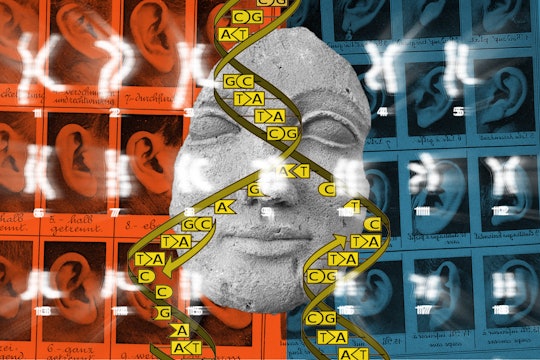
👖 Designer Genes: Learn from scientists on the frontiers of genetic engineering
Say hello to the first Massive Science Cohort
Genetic engineering is one of the most fascinating corners of scientific inquiry right now. Nearly every day, I see headlines promising a future full of science fiction oddities like hyper-efficient plants that can feed the earth’s billions, designer bacteria that produce medicine or energy, and maybe even new forms of life itself.
But I come away from those articles unsatisfied. Although they cite the latest studies, promise big changes, and quote ethicists, they’re almost always focused on the most surface-level questions.
At the company I cofounded, Massive, we think the best way to dive deeper is pretty simple: get scientists to do it. We’ve spent the last nine months training over 100 scientists to share their work with the public through accessible, accurate, and interesting stories.
This month, we took that insight a step further. We sent out a call looking for scientists working with genetic engineering — in any field — who wanted to learn to write in a focused, one-month training session resulting in two published articles.
Honestly, it was somewhat selfish. I basically just wanted to ask a bunch of smart people my questions about this futuristic field. So I was thrilled when we received over 30 applications. But that’s nothing compared to how I feel about the stories the 6 scientists we selected are telling.
Jackie Grimm, a molecular biologist at Princeton, wrote about the burgeoning field of optogenetics, which lets us probe the inner workings of cells to understand how they work. The terms “signaling” and “pathway” get thrown around a lot in science news. I finally understand what they meant after reading her article.
Synthetic biologist Kate Krueger, Director of Research at New Harvest, explored the latest work in 3D printing implants that can help us heal. Among other things, I learned that researchers solved a tricky jamming problem — the 90s called; they want their cartridges back — with common, everyday soap. I guess scientists like their lifehacks as much as the rest of us.
Biochemist Dan Samorodnitsky’s article on how the damaged protein that causes diabetes spreads — by infecting other ones — simultaneously helped me understand more than I ever have about diabetes made me realize just how little we know about one of the most common and strangest diseases.
National Louis University molecular biologist Andrew Scarpelli wrote a different version of a story you might have seen. A few weeks ago, researchers announced that they had managed to engineer beautiful, ‘pure blue’ chrysanthemum flowers. What you probably didn’t hear is that their breakthrough wasn’t exactly expected.
Devang Mehta, who studies synthetic biology at ETH Zurich, spun a tale that I swear isn’t sci-fi. It turns out that a group of scientists is working to create entire genomes from scratch. Including human genomes. What will that world look like? I’ll let Devang tell you.
Finally, Jay Bassan, a chemical cancer biologist at the University of Toronto,took on the CRISPR study you almost certainly heard about, the one that successfully used the technique to cure a disease in a viable human embryo for the first time. It was a huge moment, to be sure. But here’s the thing: Jay told us that, far from heralding a future of designer babies as you might have been led to believe, the study actually showed that it might not be possible at all — and the reason why is unbelievably cool. I went back and checked the coverage of this study. Almost everyone missed it. You shouldn’t.
When we started working with our scientist-storytellers, we realized that the concepts and stories that stand out for them aren’t the ones that most science media latches on to. They’re often the small details lurking below the surface, or the bigger picture that you can only understand if you’ve been working in a field for years. These stories tend to be much more interesting, more impactful, and more important than the ones you find in typical breaking news about science. But they’re hard to tell unless you give the right training to the right people.
If you want to learn more from this group, you should sign up for our weekly mailing list. They’ll be publishing their second round of articles starting next week. And the best part is, if you subscribe, you can respond with your own questions that aren’t being satisfied. We’ll do our best to get an answer.
If you’re a scientist interested in our training, fill out our application form. We’re recruiting for our second cohort, focused on neuroscience, which will start September 1.
